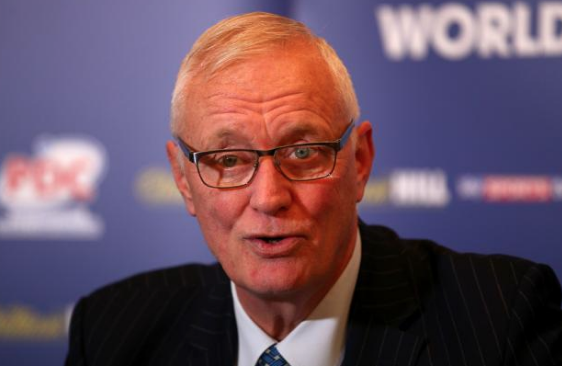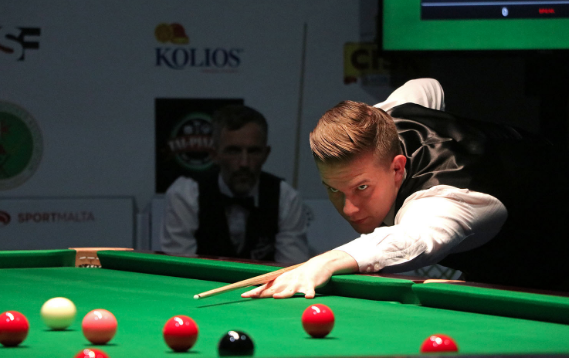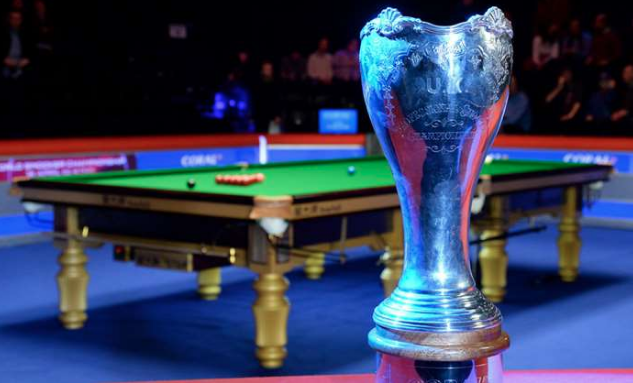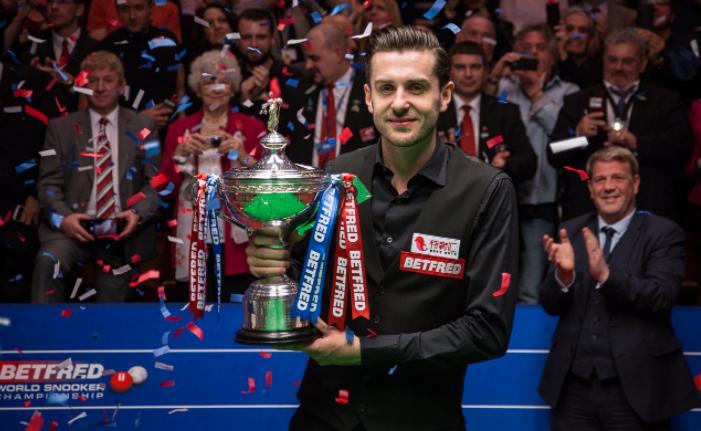Pre-2015, the qualifiers to the World Championship were tiered. In other words, those No. 17-32 had to play one match, No. 33-48 had to play 2 matches, No. 46-64 three matches and the rest, four matches. Then of course Barry Hearn came. Wanting to eliminate a sense of protectionism with the top seeds, he started off make most events flat, meaning everyone started from the 1st round. He kept the Top 16 to automatically play in Crucible while everyone had to endure a changed structure whereby everyone has to play three matches, regardless if you won two ranking events only a few thousand pounds from the No. 16 spot, or if you hadn’t won any match at all.

There are a few reasons why Barry Hearn has done this. This is to revitalise the game in the future by encouraging high-level competition at a lower level. This is to encourage low-ranked players a fair chance to get to the Crucible as everyone else. There are always going to be shocks there and everyone loves an underdog story. We’ve had Reanne Evans beat seasoned and talented pro Robin Hull and more recently, Jimmy White one step closer to the Crucible by defeating higher-ranked player Sam Craigie. This creates headlines and publicity, which is exactly what Barry Hearn is after while further encouraging the globalisation of the modern game that it is today. With no money for the loser, this creates a strain to end this season on a high and/or saving their tour card. Because they will have to traverse through the gauntlet of three best-of-19 matches, there is the greater satisfaction that the 16 survivors deserve to be in the Theatre of Dreams.
Remember. All these matches are worth 9 grand to the winner. Might not sound a lot in a global sport but remember some of these players are skint. Huge pressure this first match.
— snookerbacker MBE 🗣️ (@snookerbacker) April 11, 2018
But is it actually better than the previous format – the seeded tiers where the higher the ranking, the fewer matches you need to win to get to the Crucible?
Yes To Seeded Tiers
One of the major problems with the current format is sometimes the fairness of the draws made. Even though the No. 17-80 seeds are fixed in their positions, this means they are randomly drawn with the rest. This means they can be drawn with seasoned professionals, young prospects and amateurs and those receiving an invitation from World Snooker. Problem with that is that whoever you are being drawn against is a complete lottery. You can be drawn against an unproven amateur or someone capable of beating a Top 16 player at the very top of their game.
There are players out there who are going to be given £9k today!! #shouldbeseeded#oldformatisbest#notfair
— Joe Perry (@joegentlemanjoe) April 9, 2018
This is especially the case this year, where Graeme Dott and Matthew Selt were practically given £9,000 in ranking points by thrashing amateurs Adrian Ridley and Ng On-yee respectively 10-1, while some professionals fighting for their tour card may be drawn against bigger threats. Examples include Zhao Xintong vs. Aditya Mehta and Sam Craigie vs. Jimmy White. It is incredibly unjust when you are fighting for money and career against a tough opponent while your main rival waltzes past an amateur to a comfortable victory, almost like a walkover. When one win can push you up the one-year ranking list, this is a huge advantage.
https://twitter.com/duanejones147/status/983264030478434304
Which is seeded tiers work well in fairness. It is almost like an evaluation of the past two-years. After performing so consistently, winning ranking tournaments without being in the Top 16, you deserve a reward for your efforts – what better prize than being one step closer to entering the Crucible compared to everyone else? Considering nearly every event now is flat, there needs to be some leniency of whether rankings actually mean SOMETHING. SOME PAY-OFF AND INCENTIVE TO BE No. 17 compared to No. 100?!?!

At least with the lower-ranked players, they will be playing against opponents around about the same rank. The main problem with open draws is being constantly drawn against top players rather than those of their calibre – Vinnie Calabrese was drawn against Ronnie O’Sullivan, Judd Trump and Mark Selby within a couple of months! You can argue that having the Home Series gave them opportunities to do that. At least with tiered draws, you know players know the calibre of player they and their opponent will be playing against.
https://twitter.com/Bobinsky1983/status/983279757671452673
Lastly, this is more related to the the World Championship qualifiers itself rather than the topic is the prize money. You earn £9,000 in the first round and an additional £4,500 in the second round. It is much fairer to see the prize money swapped around so that beating an amateur doesn’t secure your tour spot while beating someone who at least won their first round match and are as battle-hardened as you are, does.
Yes To Flat Draws
They are brutal. BRUTAL. BRUTAL. Maybe if Barry Hearn repeats that word enough times we will eventually be unanimous in agreeing with this change!
In all seriousness there are elements of brilliance in this. First and foremost it creates headlines. While in the previous format interest will only perk up in the final qualifying round however in this current one, interest is maintained to a very high level. Would you get stories such as Reanne Evans beating Robin Hull in 2017 or watching two of the hottest prospects in Jackson Page and Yan Bingtao going blade to blade if it was under a tiered format? Probably not. This is the format that encourages the most shocks and as everyone says, all players have equal chance to qualifying, as everyone is on a level-playing field.
I understand your point @joegentlemanjoe but this is a fantastic qualifying format, produces great drama. I think the selection process for invites is what should be improved. Looks like 1 or 2 have been shoe-horned into todays draw
— Jim O'Hare (@jimnohare) April 9, 2018
The great advantage of this format is that it increases the prestige of the World Championship at the Crucible. It might not need the helping hand to do so, but making even reaching the Crucible such a daunting task makes the World Championship extra special. It gives the sense that the qualifiers deserve to be there and they have done so because they won three best-of-19 matches rather someone needing just the one. It makes the qualifiers look more dangerous, as they have been (very much!) warmed up against the seeds, potentially causing more shocks in the process.
https://twitter.com/Bobinsky1983/status/983279757671452673
Lastly, the qualifying gives a lot of snooker fans, especially the purists, the taste of long matches they’ve been craving for. The of the biggest critiques of Barry Hearn’s successful rule of the sport is that it is being dumbed down by many best-of-7 matches and flat draws, with many feeling the Shanghai Masters and the UK Championship lack the spark because of either or both shorter matches and flat draws. The new World Championship format keeps the anoraks and traditional fans engrossed, with some even claiming this is the second best thing before the World Championship. Not sure if I would go as far as that since it would be depressing for that the second best thing in the calendar isn’t even a snooker event, but there are plenty of reasons of thinking this.
Ending
I love the current format. Plenty of shocks. plenty of permutations. Lots of analysis on tour survival. Lots of predictions and seeing those people making predictions messing up big-time stylie. Including myself.
This season alone, we are seeing another amateur story of Pole Adam Stefanow making a decent crack at the Crucible. Alexander Ursenbacher made it to the final qualifying round as an amateur last year so it isn’t too surprising to see another one nick a win from under a professional’s nose. Though I have never been to Pond’s Forge, I have been the the English Institute of Sport and the intensity is quite palpable in the matches as well as seeing players practice. The headlines and darting from one match to another and seeing surprise result after surprise result is fantastic. Just because you had a fantastic season, doesn’t mean you get a Crucible place on a plate. You have to earn it.

So. Entertaining? Interesting? Brutal? Intense? Nerve-wracking? Absolutely.
But fair? Not really. Seeing some professionals given an easy challenge by amateurs such as Marvin Lim and Aaron Canavan while others in the same position by another professional doesn’t sit right with me, especially when there is so much at stake, such as a nice pay cheque or relegation from the snooker circuit. Maybe the list invitees should be strengthened? On the other hand, who can replace them?
My other issue is the interests that it generates. More and more people are interested in snooker over the past few years, so I’m not sure whether a qualifying format would be needed to generate headlines at all. We have seen players such as Cao Yupeng, Robin Hull, Luca Brecel and Andrew Pagett win 4 matches to reach the Crucible in the tiered format, so the many the amount of shocks because of the current format is slightly overstated. If interest was the same then like it is now, it would still create headlines, so I’m not sure if the change of format had much to do with it.

But I’m nitpicking. So far, the positives outweigh the negatives. If the prize money as preciously discussed can be changed, I would be happier. In the meantime, let’s kickback and enjoy the qualifiers and Judgement Day when it arrives!




